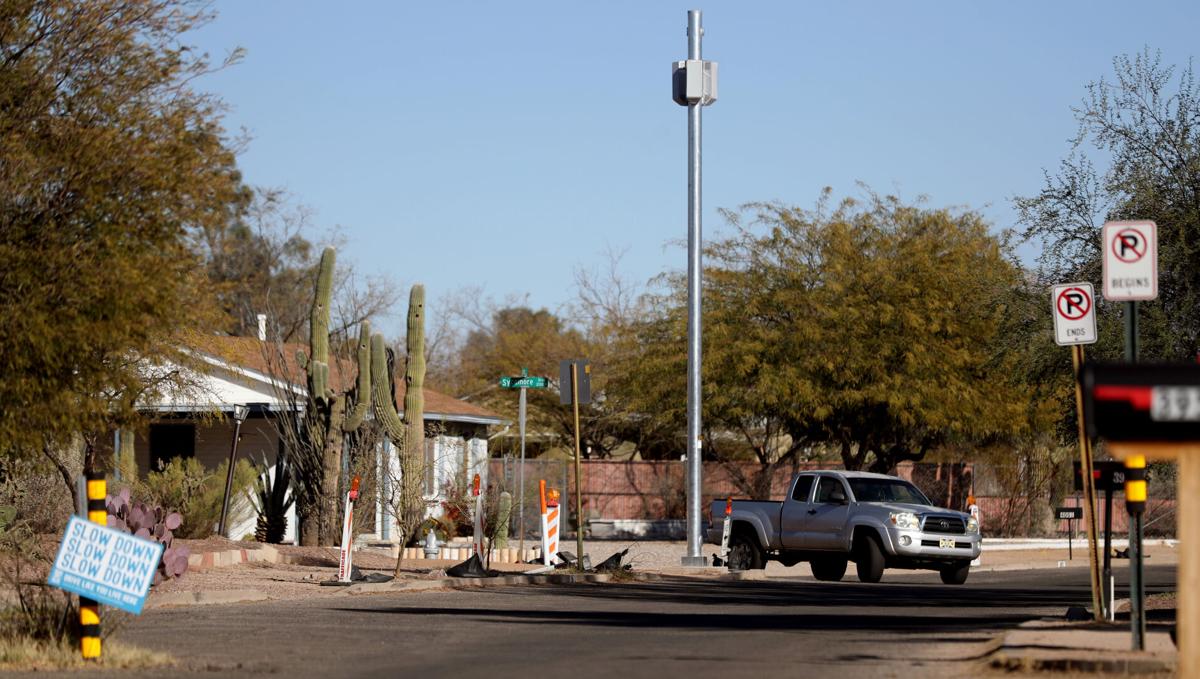City officials have introduced new rules meant to restrict where and how telecom companies install 5G poles in Tucson, representing a possible solution for those who have long criticized the scaled-down cell towers for being eyesores in residential neighborhoods.
Tucson residents have complained about 5G poles popping up in front of their homes for nearly a year. Some have even said the sudden installation of the 35-foot-tall structures has damaged private landscaping, and thousands more are expected to go up in the coming years.
The guidelines — released Aug. 20 as part of the Department of Transportation and Mobility’s Public Utility Administrative Manual — are intended to prevent those forthcoming poles from causing further problems for community members. They include general design and placement rules for 5G poles, as well as a provision that allows the public to view and comment on new projects during the planning stage.
But the manual may lack the teeth some residents hoped it would have.
State law prevents the city from dictating specific locations for 5G poles, and telecom companies will not be required to change their design plans in response to resident feedback. The new rules also will not apply to existing poles.
“Unless or until there’s a change to state law, we will not be able to compel a particular location,” said Councilman Steve Kozachik, a staunch proponent of the manual. “This is as good as we can get right now until the state takes their foot off the brake and says you guys go ahead and make some local decisions.”
Although the city does not have the power to weigh in on the specific location of 5G poles, the new manual sets general requirements that will influence where telecom companies can install them.
New poles need to be installed at least 150 feet away from any “existing verticalities,” such as a street light or stop sign. The rule is designed to incentivize telecom companies to “co-locate,” or install 5G equipment on existing structures rather than building new poles.
“That will necessarily compel a conversation about co-location because I’ll guarantee you that within 150 feet of nearly every one of these things in a residential area there’s either a utility pole or a streetlight,” Kozachik said about the provision.
The change has sparked concern among private companies that could face additional costs or logistical problems as they work to accommodate the new rules, according to city and company officials.
Co-location will require providers like Verizon and Tucson Electric Power to share a single utility pole, which could hinder access to equipment or prove costly if poles need to be replaced.
“Any time another company wants to attach its facilities to our poles, we just have to make sure there’s no impact on our own operations,” said Joe Barrios, a TEP spokesman. “Let’s say a telecom company wants to attach something to one of our poles, we do need to look at the pole to make sure it can accommodate that additional equipment.”
Barrios said TEP has taken steps to accommodate co-location over the past year, and Verizon representative Heidi Flato has said previously the company prefers to mount 5G utilities on existing structures rather than installing new poles.
The city’s manual will also require companies to notify community members before a new pole is installed.
Affected residents will be able to view the project plans during the design stage and give feedback on the proposal, and companies must submit proof that they completed this process as a condition of receiving a new permit to build.
The companies do not have to make any of the suggested changes, however, and the city cannot force them because of limitations under state law.
“We can’t compel an outcome, but now we’re in the conversation at the first step of the conversation instead of after the decisions have been made. I think that’s important,” Kozachik said.





